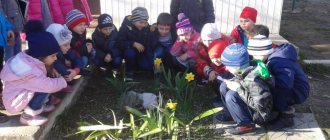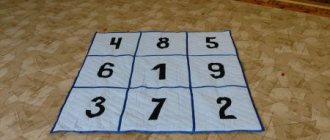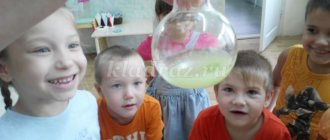Card index of games to develop the basics of financial literacy for children of senior preschool age
Stepanova O.N., Lomakina N.M. Card index of games to develop the foundations of financial literacy for children of senior preschool age // Sovushka. 2021. N1 (19). URL: https://kssovushka.ru/zhurnal/19/ (access date: 11/21/2021).
Order No. 552019
Didactic game “Put the coins in order”
Goal: to develop children’s ability to correlate banknotes by value.
Objectives: to train children in the ability to navigate in banknotes and operate with them.
Material: coins (pictures) in denominations of 1 ruble, 2, 5, 10 rubles.
Progress of the game:
Children are asked to arrange the coins first in ascending order, then in descending order.
Didactic game "Exchange"
Goal: to develop children’s ability to distinguish coins, exchange and collect the same amount in different ways.
Objectives: to train children in the ability to navigate in banknotes, operate with them, consolidate the composition of a number from 2 smaller ones to 10.
Material: teaching aid : cards with a picture of a wallet with a designated number (2,3,4,5, 6,7,8,9,10), coins (pictures) in denominations of 1 ruble, 2, 5 rubles).
Progress of the game:
Children are asked to choose a wallet and make up the amount indicated on the wallet in different ways using coins.
Didactic game “ Buy Misha (Masha) a gift”
Goal: developing children's shopping skills.
Objectives: to train children in the ability to navigate in banknotes, operate with them, develop children’s ability to make the right choice and buy the desired goods, taking into account the gaming preferences of boys and girls, provided that they have a certain amount of money to purchase the purchase.
Material: cards with the image of a wallet with a designated number (6,7,8,9,10), coins (pictures) in denominations of 1 ruble, 2, 5 rubles in accordance with the amount indicated on the wallet, cards with images of shelves on which toys are placed , stationery, books with price tags, basket.
Progress of the game:
Children are invited to choose a gift from the goods offered in the store.
Didactic game “Let’s help Masha buy healthy products”
Goal: developing children's shopping skills.
Objectives: to train children in the ability to navigate banknotes, operate with them, and choose only healthy products for the amount indicated on the wallet.
Material: cards with the image of a wallet with a designated number (6,7,8,9,10), coins (pictures) in denominations of 1 ruble, 2, 5 rubles in accordance with the amount indicated on the wallet, cards with images of shelves on which various food products: milk, sour cream, vegetables, fruits, candies, juice, Coca-Cola, chocolate, etc., shopping basket.
Progress of the game:
Children are invited to purchase healthy products for the specified amount.
Didactic game “Help Mom buy groceries”
Goal: developing children's shopping skills.
Objectives: to train children in the ability to navigate banknotes, correlate banknotes by value, operate with them, correlate desires with financial capabilities, and cultivate frugality.
Material: cards with a picture of a wallet with a designated number (6,7,8,9,10), coins (pictures) in denominations of 1 ruble, 2, 5 rubles in accordance with the amount indicated on the wallet.
Task cards (pictures depicting necessary goods), model cards “Fund for Helping Homeless Animals”, “Piggy Bank”, “Family”.
Progress of the game : Children are invited to make purchases in accordance with the task card, use the remaining money from the purchase at their discretion: buy something for themselves, donate it to charity, return it to their mother or put it in a piggy bank.
Role-playing game " Supermarket "
Goal: to consolidate the purchase algorithm and buyer actions.
Tasks:
- continue to learn how to solve problem situations, give reasons for your answers, and activate your vocabulary.
- promote the development of attention, logical thinking, coherent speech; promote the formation of communicative relationships.
- promote the development of moral qualities, a correct attitude towards money and its wise use.
Material: inventory and equipment of the role-playing game “Supermarket”; a set of cards for the distribution of roles (with the image of a buyer - 4 pcs., cashier - 2 pcs., seller - 3), 5 cards depicting a set of products and goods, 4 bank cards, 4 wallets with a set of coins and bills.
Progress of the game:
Game roles: seller, buyer, cashier. Children are asked to choose a card and determine what role they will play in the game.
Game actions: Sellers go into the sales area, check the presence of price tags, and the order on the shelves. Cashiers are invited to enter the box office. Buyers are asked to select a card with a set of goods required for purchase and determine the payment method (cash or non-cash).
Buyers go to the store to make purchases, making purchases and correlating the amount of money with the price of the product and the amount of purchases purchased. They go to the checkout and pay for the goods.
The development of the game involves combining the plots with the role-playing game “Family”, “Cafe”.
Game 2. “Shop”
Now the child knows that any amount can be added up from different money. What to do with this money? That's right - go to the store and pay for your purchases.
Practice going to the store at home.
How to play
Just like in childhood, only instead of leaves, take real coins and small bills.
Place “goods” on the table: toys, food from the refrigerator. Attach a price tag to each product. Agree who will be the “seller” and who will be the “buyer.”
If the “buyer” is a child, then he will have to collect the required amount of bills and coins and give it to you in exchange for the goods. If the amount is more, let him wait for the change. Then switch roles. Now the task of the child “seller” is to check whether you gave him the money correctly. And if necessary, return the change.
Result
This game teaches the child the basic principle of commodity-money relations: in order to acquire something, you need to pay for it. The seller will receive this money and use it to develop his business - buy new products or improve those he is currently selling.
Financial vocabulary for kids
- A bank is a place where people can carry out various transactions with money.
- Deposit is money that was brought to the bank and given to be kept there.
- An ATM is a device that allows you to withdraw or deposit money onto a bank plastic card.
- Assets are anything that brings in money.
- Liabilities are what take money.
- Money is pieces of paper or coins that serve as a general exchange. For example, for money you can buy anything in a store, or go to the movies. Different countries have different money.
- Card - fully called a bank payment card. This is a piece of plastic that you can use to pay for purchases in stores, online, and many other places.
- A loan is money that a person, if he lacks for something, can ask to borrow from a bank. For example, if you want to buy a computer, but you don’t have enough money, the bank can lend you money. But then the bank will have to repay the debt and pay interest.
- A bill or banknote is what paper money is called. A bill or banknote is one piece of paper.
- Cash flow or profit is the difference between income and expenses over a period of time.
The following types of coins and banknotes are currently in use in Russia:
Article "Game as a means of economic education of older preschoolers."
Author: Kotenkova Natalya Leonidovna
Annotation.
This article examines the relevance of economic education for older preschoolers. Economic education occurs through gaming activities: role-playing games and didactic games.
Keywords:
economic education, economics, game.
The Law “On Education” of the Russian Federation and the “Concept of Preschool Education” emphasize the priority of universal human values. [1] Therefore, in the conditions of maintaining the economic independence of Russia, its scientific potential and the development of modern Russian society, the economic education of the younger generation becomes significant.
In other words, modern children have to live in new conditions, master fundamentally new professions that require new knowledge, professional and personal qualities. Thus, modern new economic conditions dictate the need to educate independent, active, active, hardworking, economically literate, highly moral, humane people from preschool age, which is the basis for the further life of the individual. [2]
Therefore, economic education, a relatively new direction in preschool pedagogy, is currently relevant and in demand.
Only at first glance, economics and a preschooler seem too far apart. The child is included in the economic life of the family very early, encounters money, advertising, goes to the store with his parents, participates in the process of buying and selling, thus mastering economic information on an everyday level. It is in the family that he first learns the price of labor, income and expenses, the advantages of material well-being, prosperity and poverty. Understood as the area of “smart housekeeping,” the “art of housekeeping,” economics is inseparable from a child from the earliest years of his life. [10]
Economic education is part of the general education system, an organized pedagogical process aimed at developing a caring attitude towards the surrounding world of values, another facet of the educational process. [9]
Economic education is understood as the result of economic education, contributing to the formation of an economic attitude towards material and spiritual values and the formation of the principles of value orientations. [eleven]
In our opinion, the effectiveness of economic education is largely determined by what moral foundation is laid in the child’s personality. In the process of economic education, along with the assimilation of basic economic categories, the formation of moral qualities of preschoolers, hard work, frugality, efficiency, occurs, which is expressed in actions and behavior.
The goal of economic education is to reveal to the child the objective world around him, as a world of spiritual and material values, as part of universal human culture, and in the process of cognition, to teach appropriate forms of behavior. [12]
In order for a child at school to have a good understanding of complex economic concepts, work in this direction must begin from the age of 5–6 years in close cooperation with parents. After all, according to psychologists, at the border of preschool and school age, there is a closure of connections between the two most important spheres of life - the world of human relations and the objective environment. One world gives way to another. It is during this period that a leap occurs in the formation of personality and its basic mental foundations. And naturally, adults cannot lose sight of this period. This is what happens in a growing person’s assessments, judgments, and attitudes toward good and evil. [5]
Considering that preschoolers have a predominance of visual-figurative thinking and the main type of activity is play, play activity becomes the main means of economic education for a 5-7 year old child.
Playing for a child is a serious activity. “To make a serious activity entertaining for a child is the task of initial education,” said K.D. Ushinsky. [7]
An analysis of psychological and pedagogical literature shows that the problem of the content of economic education of older preschoolers is very complex and ambiguous; teachers highlight various aspects: economic education of preschool children (AA Smolentseva); formation of the foundations of economic culture (E.A. Kurak); introducing children to the economy, initial economic education as one of the factors of economic socialization, which has a huge impact on the child’s developing relationship with material and spiritual values and, in general, on the development of the child’s personality (A.D. Shatova); the formation of economic socialization of children (E.V. Kozlova); formation of economic knowledge in children of senior preschool age (JI.H. Galkina); children's awareness of economic concepts (DA. Golub).
Those. the process of economic education occurs spontaneously, fragmentarily, the holistic theory of economic education of preschool children has not been sufficiently developed, and the problem of economic education of older preschoolers through play has not been sufficiently studied, in this regard, the program “Game as a means of economic education of older preschoolers” has been developed.
The goal of the program is the economic education of older preschoolers (this is the process of forming an economic outlook, mastering economic ideas and concepts, initial economic skills, acquiring such personality traits as hard work, frugality, efficiency) through play activities.
Tasks:
1. Introduce children to the theoretical basis of economic sciences (through familiarization with the most accessible economic concepts, familiarization with modern market relations).
2. To develop skills of caring for all types of property, respect for the interests of the individual and other members of society, instilling respect for work and working people.
3. Development of gaming activities.
4. Fostering the necessary qualities in children (respect for the objective world, nature, etc.).
5. Formation of skills of reasonable behavior and needs.
The program is designed for two years (1st year of study - children 5-6 years old, 2nd year of study - 6-7 years old) and is divided into blocks. At the age of 5-6 years, 4 economic categories are studied: needs; work; product; money.
At the age of 6-7 years, the process of mastering 8 economic categories is underway: economics; profit and loss; needs; money ; labor (professions); advertising; barter; business and capital.
I began my work by preparing methodological support. Methodological publications by L.G. Kireeva, A.A. Smolentseva, E.A. Kurak, and A.D. Shatova became the main manuals for the implementation of economic education.
It is known that the development of a child depends on many factors, including the relevant environment, i.e. the environment in which it occurs. Therefore, it is so urgent to create a subject-development environment in a preschool educational institution - the space in which the child lives and develops: the natural world, the world of people, the world of the subject-spatial environment. [13]
The group has created a corner “Economic ABC”, in which there is a map of the city, which shows the industrial centers of our city, as well as large stores. The development environment was supplemented with the following board and printed games on economics: “Monopoly”, “money”, “supermarket”, “what is made of what”, “sweets and coins”, “professions”, “economics”, etc. To the role-playing game in the “Shop” game, a cash register was purchased, checks and money were made., for the “Bank” game - receipts, a computer layout, money, I created a card index of economic concepts, which I regularly replenished as I studied the material. A did card index has also been developed. games.
Cooperation with parents played a significant role, so I spoke at a parent meeting with information on the topic of economic education “Preparing a child for life.”
Parents really like that their children study economics, and they help us in every possible way to raise our children “economically.” After all, the “first economic experience” is acquired in the family. Therefore, the children in their families tried out the economic experience acquired in the classroom: they distributed family needs according to importance (what to spend money on first, what to spend money on last), drew up a family budget, bought food, saved household resources (electricity, water), took care of to everything in the house.
In my work, I use story-based didactic games, which are both educational and educational. Such a game has a detailed plot, including a variety of roles, where certain game problems are solved directly on the basis of acquired mathematical knowledge and are offered to the child in the form of game rules. Plot-based didactic games help make economics understandable for children through modeling real life situations: buying and selling, production and marketing of products, etc. [3]
With the help of story-based and didactic games, I help children enter the complex world of objects, things, and human relationships.
On the theme “labor - product - commodity” I organize such games as: “Atelier”, “Furniture workshop”, “Market”, “Shop” “Hospital”, “Pharmacy”, “Hairdresser”, “Builders”, “Farmers” . Children comprehend the meaning of labor and reproduce the labor processes of adults. During the game, children use a variety of materials and master labor operations for the manufacture of various goods.
The goal is to give children knowledge in the field of financial categories, to form an idea of a product as a result and product of human labor, to develop skills in evaluating objects in terms of their quality and cost, moral and labor qualities of an individual through a comparative analysis of one’s own and others’ work, and also to consolidate skills evaluate a thing as a commodity and as an object of human relations. Preschoolers got acquainted with professions - traditional (games “I Know All Professions” and new ones (for example, advertising agent, advertiser, banker), the importance of various types of work for a person. I tried to convey to the children’s consciousness that there are no bad or good, necessary or unnecessary professions, everyone is necessary. It doesn’t matter what a person’s profession is, what matters is how he does his job, what benefits he brings to people.
On the topic “money and price,” I include in children’s activities a game that involves operations with coins of different denominations and values, and the exchange of money. These are games such as “Small Shopping”, “Market”, “Pharmacy”, “Bank”. During such games, children learn that every thing costs money and learn to compare the price of an item with the available cash. Children are introduced to the concept of a bank - a place where they lend money, change it, store it and pay it back.
When playing “Shop” and “paying” for purchased goods, preschoolers do not pay attention to the value of money. You can often hear from children: “I had one piece of money, and now I have several (two, three, five, etc.),” so there were classes dedicated to familiarizing preschoolers with Russian banknotes. To trace the history of Russian money, the folder “History of Russian paper money” was created. During classes, children learned that there is paper money - bills and metal - coins, money has dignity, and not always one bill or coin is less than two or three. They clarified the names of banknotes - rubles and coins - kopecks, what denominations of money are used in our country, and introduced the children to currency.
For this purpose, she introduced preschoolers to such concepts as “salary”, “pension”, “family budget”, they explained what it consists of, what goods and services the family’s money is used to pay for, because it is no secret that many children perceive money in my parents’ wallet as money to buy toys and sweets. We often hear in a store: “Mom, buy ...” - and we see with what bewilderment the child greets the mother’s statement that she does not have money: after all, he just saw it in her wallet. In order for the children to understand where the money earned by family members goes, we discussed with them possible options for spending the money. At the same time, we proceeded from the life experience of preschoolers: they go with their parents to the store for groceries, to the savings bank to pay for utilities, long-distance telephone calls, etc.
Plot-based didactic games on the topic “advertising” give children the opportunity to practically carry out the process of creating advertising. Introducing children to the work of an advertising agent, advertiser, and graphic designer.
The formation of “useful skills and habits in everyday life” occurs in various plot-based didactic games: “Atelier”, “Furniture Workshop”, “Market”, “Hospital”, “Pharmacy”, “Hairdresser”, “Builders”, “Farmers”, “Bank”, “Auction”, “Factory”, “Travel Agency”, etc. In addition, she taught children to conserve the country’s resources: water and electricity. She conducted play sessions “The Journey of Kapa and Droplets”, “How Gnome Economy Saves Electricity”, during which she explained to the children where water and electricity come from in the house, why they are needed, why they are expensive, etc. Children no longer forgot to turn off the tap behind them and reminded adults to turn off the lights.
In my work, I relied on the empirical knowledge and life experiences of children, trying to clarify and expand their ideas in the field of economics.
I also used didactic games as a means of forming the foundations of economic culture. The main feature of didactic games is that tasks are offered to children in a playful way. They play without suspecting that they are mastering knowledge, mastering skills, and learning a culture of communication and behavior. All didactic games include cognitive and educational content, which allows you to integratively solve problems in developing the foundations of economic knowledge in older preschoolers. [4]
During the experimental work, didactic games were included in the content of classes and were carried out outside of them. For the emergence of independent didactic games in the group, the necessary conditions were created: appropriate didactic material and manuals were selected. To increase interest, didactic games of different content and types were used: with objects, with pictures, printed board games, verbal economic games, as well as travel games, riddle games, conversation games, guessing games, etc. [13]
The use of games in economic education plays a positive role. Children are more successful in acquiring economic knowledge and applying it in games. It can also be noted that children have begun to treat their personal and kindergarten belongings much more carefully and are trying to save material in productive activities. We learned to think logically, reason on economic topics, and formulate conclusions.
Positive feedback has also been received from parents. The teachers received special thanks for their work on the topic of family budget and its rational use. Children began to react with understanding to their parents’ refusals to buy things they didn’t really need.
At the end of the year, a diagnostic test was carried out on economic knowledge. Her results showed that there were more children with a high level of development, and children from a low level moved to an average one. So the high level was in 3 and became 10 children, the average level was in 13 - became 9, the low level was in 4 - became 1.
Economic education brings a preschooler closer to real life, allows him to acquire the qualities inherent in a real owner who knows how to count money, and develops the business qualities of an individual, which ensures continuity between kindergarten and school.
List of sources used
1. Federal Law of December 29, 2012 N 273-FZ “On Education in the Russian Federation”.
2. Preschoolers about economics: a guide for teachers of institutions providing preschool education / E.N. Tabih. – Minsk: Vysh. school, 2011. – 48 p.: ill.
3. Playing economics: comprehensive classes, role-playing games and didactic games / author - comp. L.G. Kireeva. – Volgograd: Teacher, 2012 – 169 p.
4. Knyshova L.V., Menshikova O.I., Popova T.L. The economy of milking babies, or How Misha became a businessman. – M.: Pedagogy – Press, 2011 – 118.: ill.
5. Lushnikova E.V. How we play economics //Teacher of the preschool educational institution “TC SPHERE” M.; 2008. No. 11. p.75.
6. Raizberg B.A., Lozovsky L.Sh., Tsymuk M.I. Children's economic dictionary. Publishing house "Rosmen" M.: 1999. – 192 p.
7. Smolentseva A.A. Introduction to the world of economics, or How we play economics: Educational and methodological manual, - St. Petersburg: “Childhood - Press”, 2011. – 176 p.
8. Smolentseva A.A. Problem-based game technology for economic education of preschoolers // Kindergarten from A to Z. 2003. No. 4. p.63.
9. Shalamova T.P. Introducing children to the world of economics // Kindergarten from A to Z. 2003. No. 4. p.89.
10. Shatova A.D. Preschooler and ... economics // Hoop. 1999. No. 1.
11. Shatova A.D. Do preschoolers need economic education and why? // Preschool education. 1994. No. 8
12. Shatova A.D. Discussing the problem “Economy and ... children” // Kindergarten from A to Z. 2003. No. 4. p.148
13. Economic education of preschool children: Sample program, long-term planning, lesson notes / Under.
ed. E.A. Kuraka. – M.: TC SPHERE, 2012. – 80 p. comments powered by HyperComments
Game 3. “Quest in the supermarket”
Previous games taught the child to distinguish money by face value and pay for purchases. It's time to test your knowledge in practice.
How to play
Invite your child to go to the store. Explain that this time he will be in charge: he will need to make sure that you bought all the planned goods and whether there was enough money for them.
1. Together with your child, make a shopping list and prepare the amount you plan to spend in the store.
Advice: let the shopping list not be long (maximum three or four items), and the amount of money not very large, so that it is easier for the child to navigate it (two hundred to three hundred rubles).
2. Walk around the store with your child. His task is to collect all the goods from the list and meet the planned amount. Draw your child's attention to the fact that goods from the same category (for example, milk) may cost differently. The price depends on the name of the manufacturer and the volume of goods.
3. Towards the end of the shopping trip, invite your child to buy an expensive item not on the list - for example, a box of sweets. If the child agrees, ask: does he have enough money? Of course, there is not enough money for everything. Then offer him options: either you refuse to purchase goods from the list and buy a box of sweets, or you put off the sweets for later and go to the checkout only with those purchases that you planned in advance.
Let the child choose.
Result
At the end of this game he will learn several things at once:
Firstly, he learns that before going to the store he needs to make a shopping list. This makes it easier not to add too much to your basket and waste all your money.
Secondly, he learns that the same goods can cost differently. And the most expensive product is not necessarily the best.
Thirdly, he learns that all purchases are divided into desirable and necessary. A box of sweets is a desirable splurge. Sweets are delicious, but if you have milk and sunflower oil at home and don’t have much money with you, you can do without sweets. That is, in this case, a box of sweets is a desired purchase, and milk and sunflower oil are necessary.
The fourth lesson is waiting for him at the checkout. The child will have to pay for purchases and check the change that the cashier will give him. Invite your child to keep the change. He can spend it on a toy or something tasty, or he can put it in a piggy bank.
Hurray, the quest is completed. Repeat it periodically with your child - this way he will soon learn to be smart about spending.
Board and printed game "Economic Journey"
Printed board game “Economic Journey” for preschool children from 5 years old
Game developer:
teacher 1st category
Mosolova Alena Dmitrievna
Explanatory note
The modern world is quite rich in all kinds of games, board games
– this is a separate whole huge world for children.
Tabletop content
games are very diverse.
This includes: inserts, puzzles, cubes, pyramids, mosaics, various lacing, construction sets
, lotto, dominoes.
Some types of lotto and paired pictures introduce children to individual objects (dishes, furniture, animals, birds, vegetables, fruits) and introduce them to their qualities and properties. Others clarify ideas about seasonal natural phenomena (seasons, various professions). A large selection of board and printed games on a wide variety of topics: classification, generalization, comparison, counting, composing problems, associations. A huge variety of games for the development of speech of preschoolers - accumulation of vocabulary, development of phonemic processes, lexico-grammatical representations, coherent speech of children, development of cognitive interests of children, teaching foreign languages, etc. Therefore, we can say that an infinite number of games have already been created for children board
games for their harmonious development.
What is the importance of tabletop
game for child development?
Play, first of all, is the main activity of preschool children. In the words of V. A. Sukhomlinsky: “Game is the spark that ignites the flame of inquisitiveness and curiosity of children.” Therefore, board games
Naturally, they develop the intellectual and positive abilities of children, the positive emotions of the child.
Children develop memory, attention, and imagination. In the process of playing
, children develop all aspects of the child’s personality: compliance, tolerance, cooperation, as well as concentration, perseverance, the ability to complete a task, discipline - these are the qualities that children need when studying at school.
In addition, play is very important for education
preschoolers have strong-willed character traits: the ability to set a goal, find means to achieve it, and overcome difficulties.
Board games at an older age develop habits of correct behavior and help children master the rules of the game
, do not break them, “take turns”, do not get angry at peers who make mistakes in the game.
The human brain is very interestingly designed in such a way that it does not forget anything and puts everything away in its so-called “briefcase”; all lost situations and qualities in children are reinforced, assimilated, appropriated by the child, and become habitual norms of behavior. That is why, as part of the implementation of the partial program “Economic education for preschoolers: developing the prerequisites for financial literacy” (5-7 years old), I developed a printed board game to reinforce the basics of financial literacy. Together with the children, we decided to create our own economic game, came up with the rules and goal of the game. As a result, we came up with a wonderful walking game “Economic Journey”
with economic rules.
Educational purpose
games - to help children aged five to seven years old enter into socio-economic life, to contribute to the formation of the foundations of financial literacy in children of this age.
Tasks:
to form in children the understanding that money cannot be taken just like that, it must be earned,
teach to understand and appreciate the surrounding objective world (the world of things as a result of people’s labor);
apply acquired skills and abilities in real life situations;
respect people who know how to work and earn money honestly;
promote the formation and development of children's imagination, communication abilities, and interaction skills.
Purpose of the game
– reach the finish line, in this game – to the bank and put all the accumulated coins into the bank.
Game progress: players, by throwing a dice, can ride a train, an airplane, have fun on attractions, eat pizza, ice cream or other sweets, and they can also fly on a parachute and even get to the pirates. For each item you will have to incur costs and pay coins, their number is indicated on the playing field (for example, -1). But during the game you can also earn coins (the number of coins is indicated on the playing field, for example, +3) by doing good deeds, which the participant in the game must come up with independently. The essence of the game is to go to the bank and put coins in storage. The students in my group found it very interesting and exciting to create a game on their own.
Audience of the game: children from 5 years old.
Subject: basics of economics and financial literacy.
Materials for creating a game: Whatman paper, sponges, gouache, brushes, ruler, paper for making cubes, colored paper for making coins.
The game "Economic Journey" is completely author's development.





